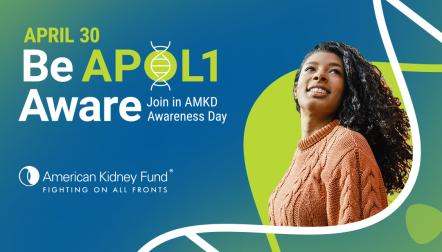
Blog post
Q & A: What you should know about Medicaid unwinding
Q: What is Medicaid unwinding?
A: At the start of the COVID-19 pandemic, Congress passed legislation that offered states temporary higher federal matching funds for their Medicaid programs. To receive the increased federal funding, states were required to keep people enrolled in Medicaid and the Children's Health Insurance Program (CHIP) until the end of the COVID-19 public health emergency.
Congress passed legislation at the end of 2022 that now requires the Medicaid continuous enrollment provision to end on March 31, 2023 — which is being referred to as Medicaid unwinding.
States have submitted operational plans to the Centers for Medicare and Medicaid Services (CMS) on how they will approach the unwinding process and how they will prioritize and process Medicaid renewals. The timeline for each state in terms of when they will start their Medicaid renewal process and when people may start receiving termination notices can be found here.
Q: Why is Medicaid unwinding important?
A: In part due to the continuous enrollment provision, Medicaid enrollment increased by 20.2 million enrollees, (or 28.2%) in October 2022 compared to enrollment in February 2020. The continuous enrollment provision also ensured that people on Medicaid and CHIP did not lose coverage during the pandemic. But as states start the unwinding process, there could be up to 15 million Medicaid and CHIP enrollees who lose their coverage. This would be the biggest transition in health coverage since the Affordable Care Act (ACA) was implemented in 2014. Coverage terminations may occur because of a change in income or household status that makes a person no longer eligible for Medicaid, or for procedural reasons like not responding to a renewal notice or not receiving a renewal notice because it was sent to the wrong address, even though a person is still eligible for Medicaid/CHIP.
Nearly 1 in 4 Americans are enrolled in Medicaid or CHIP. Medicaid plays a vital role in helping enrollees prevent and manage chronic conditions such as chronic kidney disease and its leading causes, diabetes and hypertension. Many low-income Medicare beneficiaries with end-stage renal disease (ESRD) also rely on Medicaid for supplemental coverage that can provide assistance with Medicare premiums and cost sharing and covers some services that Medicare does not cover. In 2019, 45% of Medicare beneficiaries with ESRD were dually eligible for Medicare and Medicaid.
Q: I'm currently enrolled in Medicaid — what should I do?
A: CMS has a website for Medicaid enrollees with information on what people should do as Medicaid unwinding is underway, as well as the contact information for each state's Medicaid office. Because states administer their Medicaid programs so the programs vary from state-to-state, people seeking further information about renewal or eligibility need to contact their state's Medicaid office.
As CMS notes, there are things people can do to prepare for the renewal process:
- Update your contact information - Make sure your state has your current mailing address, phone number, email, or other contact information.
- Check your mail - Your state will mail you a letter about your coverage. This letter will let you know if you need to complete a renewal form to see if you still qualify for Medicaid or CHIP.
- Complete your renewal form (if you get one) - Fill out the form and return it to your state right away to help avoid a gap in your coverage.
Q: If my Medicaid coverage is terminated, what are my other coverage options?
A: If your child is on Medicaid and their coverage is terminated, they may be eligible for CHIP, which provides low-cost health coverage to children in families that earn too much money to qualify for Medicaid. If you work for an employer that offers health coverage to its employees, you may be eligible for their employer-sponsored insurance.
In response to concerns about the number of people who could lose Medicaid coverage during the unwinding, CMS has created a 16-month special enrollment period (SEP) for ACA Marketplace coverage for qualified individuals and their families who lose Medicaid or CHIP coverage due to the end of the continuous enrollment provision.
This "Unwinding SEP" will allow individuals and families in ACA Marketplaces served by HealthCare.gov to enroll in Marketplace health insurance coverage outside of the annual open enrollment period. Marketplace-eligible consumers who submit a new application or update an existing application between March 31, 2023 and July 31, 2024 and attest to a last date of Medicaid or CHIP coverage within the same time period, are eligible for an Unwinding SEP. Consumers who are eligible for the Unwinding SEP will have 60 days after they submit their application to select a Marketplace plan with coverage that starts the first day of the month after they select a plan.
For the 17 states and the District of Columbia (D.C.) that operate their own ACA Marketplace (i.e., they do not use the HealthCare.gov platform), they can implement the Unwinding SEP as well. If you live in one of those states or D.C., you can check with their Marketplace to see if the SEP is offered.


